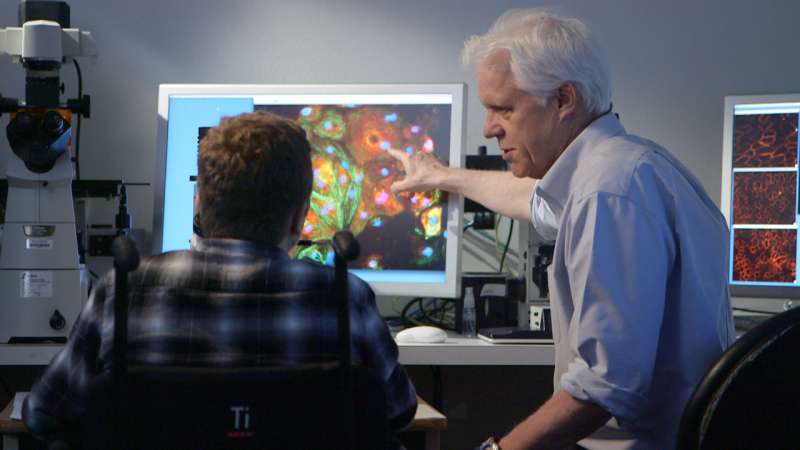February 1, 2018 report
CRISPR used to treat Duchenne muscular dystrophy cells in the lab

A team of researchers from the U.S. and Germany describes a novel CRISPR approach to produce healthy heart muscle using pluripotent stem cells from Duchenne muscular dystrophy (DMD) patients. In their paper published on the open access site Science Advances, the team describes the technique they used with CRISPR-Cas9 to overcome a problem that has prevented researchers from using the gene editing system with DMD cells.
DMD is a progressive disease that robs patients of muscle tissue, causing heart failure and death at a young age. DMD happens when large numbers of gene mutations, duplications and deletions occur in the X-linked dystrophin gene, which is responsible for the creation of the dystrophin protein that keeps muscles healthy and strong. Because it is gene-based, it has been seen as a good candidate for CRISPR research that could, perhaps, lead to a cure. The problem preventing such research has been the huge number of mutations involved—approximately 3,000. To overcome this problem, the team used an approach they call "myoediting," in which CRISPR is used in a way that takes into account hotspots of mutations in a gene, allowing for editing and repairing entire clusters.
The work involved creating induced pluripotent stem cells from patients with DMD. Those cells were then myoedited and "programmed" to grow into heart muscle cells that were able to produce dystrophin protein. The team then grew a very small bit of heart muscle tissue by scaffolding several of the cells together, and found that doing so resulted in tissue that was not only able to beat, but also remained healthy due to production of dystrophin protein.
The results indicate that the technique could possibly be used to treat up to 60 percent of DMD patients. The technique has already been tested in living mice and dogs—the mice, the researchers report, have lived DMD-free for a year. Now that the technique has been shown to work with human cells, the team is optimistic about its future, suggesting that clinical trials could begin in as little as just a few years.
More information: Chengzu Long et al. Correction of diverse muscular dystrophy mutations in human engineered heart muscle by single-site genome editing, Science Advances (2018). DOI: 10.1126/sciadv.aap9004
Abstract
Genome editing with CRISPR/Cas9 is a promising new approach for correcting or mitigating disease-causing mutations. Duchenne muscular dystrophy (DMD) is associated with lethal degeneration of cardiac and skeletal muscle caused by more than 3000 different mutations in the X-linked dystrophin gene (DMD). Most of these mutations are clustered in "hotspots." There is a fortuitous correspondence between the eukaryotic splice acceptor and splice donor sequences and the protospacer adjacent motif sequences that govern prokaryotic CRISPR/Cas9 target gene recognition and cleavage. Taking advantage of this correspondence, we screened for optimal guide RNAs capable of introducing insertion/deletion (indel) mutations by nonhomologous end joining that abolish conserved RNA splice sites in 12 exons that potentially allow skipping of the most common mutant or out-of-frame DMD exons within or nearby mutational hotspots. We refer to the correction of DMD mutations by exon skipping as myoediting. In proof-of-concept studies, we performed myoediting in representative induced pluripotent stem cells from multiple patients with large deletions, point mutations, or duplications within the DMD gene and efficiently restored dystrophin protein expression in derivative cardiomyocytes. In three-dimensional engineered heart muscle (EHM), myoediting of DMD mutations restored dystrophin expression and the corresponding mechanical force of contraction. Correcting only a subset of cardiomyocytes (30 to 50%) was sufficient to rescue the mutant EHM phenotype to near-normal control levels. We conclude that abolishing conserved RNA splicing acceptor/donor sites and directing the splicing machinery to skip mutant or out-of-frame exons through myoediting allow correction of the cardiac abnormalities associated with DMD by eliminating the underlying genetic basis of the disease.
© 2018 Medical Xpress




















